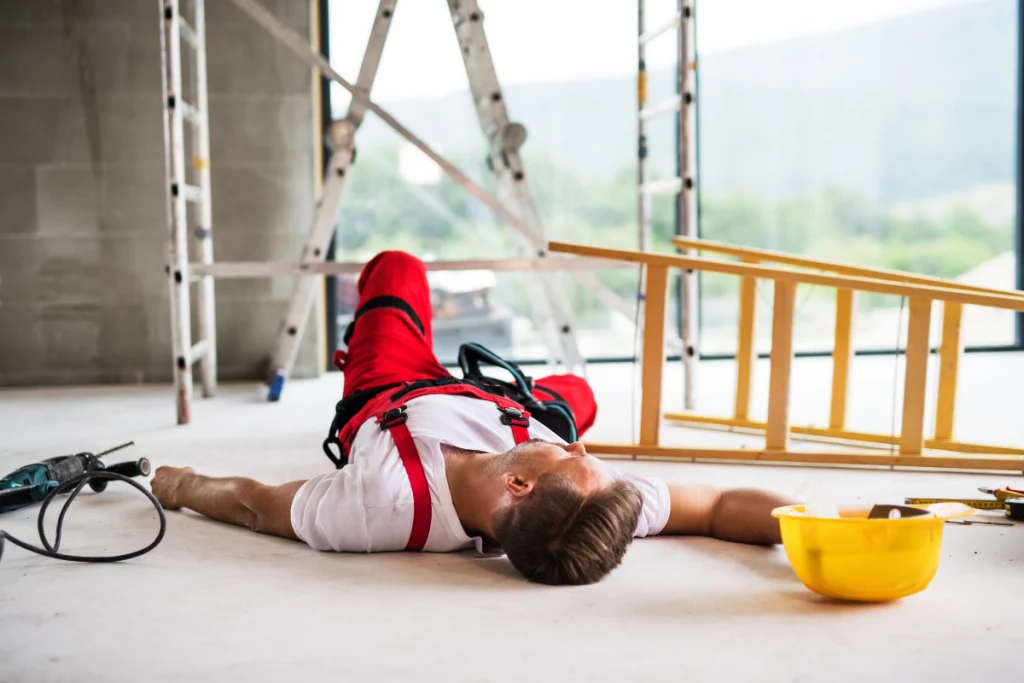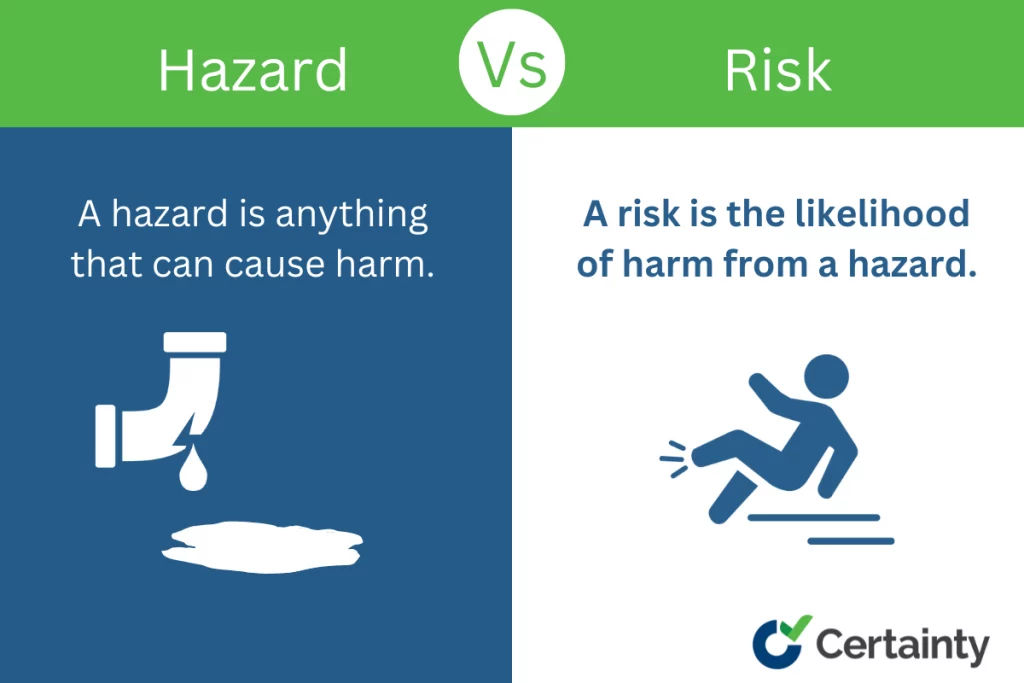Table of contents

Hazards and risks are interconnected. Both represent potential problems for companies if workers are injured as a result of preexisting hazards or risks, the results could have both short- and long-term implications on health and safety. It’s worth noting, however, that while hazards and risks are similar, they’re not the same thing. Although they’re sometimes used interchangeably to describe problematic working conditions on job sites or in work areas, they’re actually two sides of the same coin. Here’s what you need to know about the differences between a hazard and a risk.
What is a Hazard?
A hazard is anything that can cause harm. On a worksite, for example, a hazard could be an electrical cable that’s started to fray — the electricity running through exposed wiring represents a hazard that could cause injury. Other hazards may be less obvious. Consider an employee who’s under significant stress at home. Issues with mental health can cause them to lose sleep and make it tough to focus on their job, in turn creating a potential hazard.
What is a Risk?
A risk is the likelihood of harm from a hazard. Consider the electrical cable example above. If the cable is largely intact and is located in a part of the worksite that’s infrequently used, the risk of injury-causing hazards is low. If, however, the cable has suffered severe damage, and is located in the middle of the worksite, the level of risk becomes moderate.
Add in other factors such as staff not wearing proper personal protective equipment (PPE), and there is now a high risk that the hazard will cause injury.

30+ Audit and inspection checklists free for download.
Examples of Hazards and Risks
Let’s look at a few more examples of workplace hazards and risks.
Spilled water, gasoline, or oil on shop floors represents safety hazards. The likelihood of someone being injured represents the risk. If staff immediately notice the wet floor, get signage to warn other employees, and get the tools to clean it up, the risk is low. If the spill is ignored and there is no communication about where the hazard is located, there’s a much higher chance that staff moving from one location to another will encounter the spill, trip, and potentially injure themselves.

Production line machinery also represents a hazard. All types of machinery come with the potential for injury if they’re not used properly — staff could get their hands or clothing caught in the machine, or misuse could lead to electrical shorts or fires. Risk, meanwhile, is increased or decreased by factors such as training and familiarity: Have the staff been trained to use the machine? Do they have practical experience?
Safety documentation also plays a role: Are there clear instructions and warnings posted nearby? Are they easy to read and understand? Have they been recently updated? The combination of these factors — training, experience, and documentation — can increase or decrease the risk of a hazard causing harm.
How Hazards and Risks are Connected
All types of hazards lead to risk. If no hazard exists, the risk of potential harm is negligible.
While it’s impossible to eliminate all operational hazards, there are steps companies can take to minimize the number of hazards and improve overall risk management.
This starts with the identification of hazards. Frameworks such as our Confined Space Identification & Hazard Evaluation Checklist can help companies pinpoint potential problems. Wherever possible, companies should leverage this information to remove hazards and implement control measures, which in turn helps reduce associated risks.
Next, organizations can leverage tools such as our Fire Risk Assessment Checklist to discover the level of risk associated with hazards that can’t be removed — in this case, fire. No matter how many processes and policies are put in place, manufacturing worksites and construction job sites come with the hazard of fire and the potential risk of injury and damage. By recognizing and mitigating this risk, however, businesses can help keep workers safe and keep operations running.
Bottom line? Hazard and risk are closely related but not the same. Increasing workplace safety, however, means addressing both concepts to increase operational control and visibility.
You may also be interested in:
The Top 5 Safety Metrics You Should be Tracking
The Difference Between Leading and Lagging Safety Indicators



